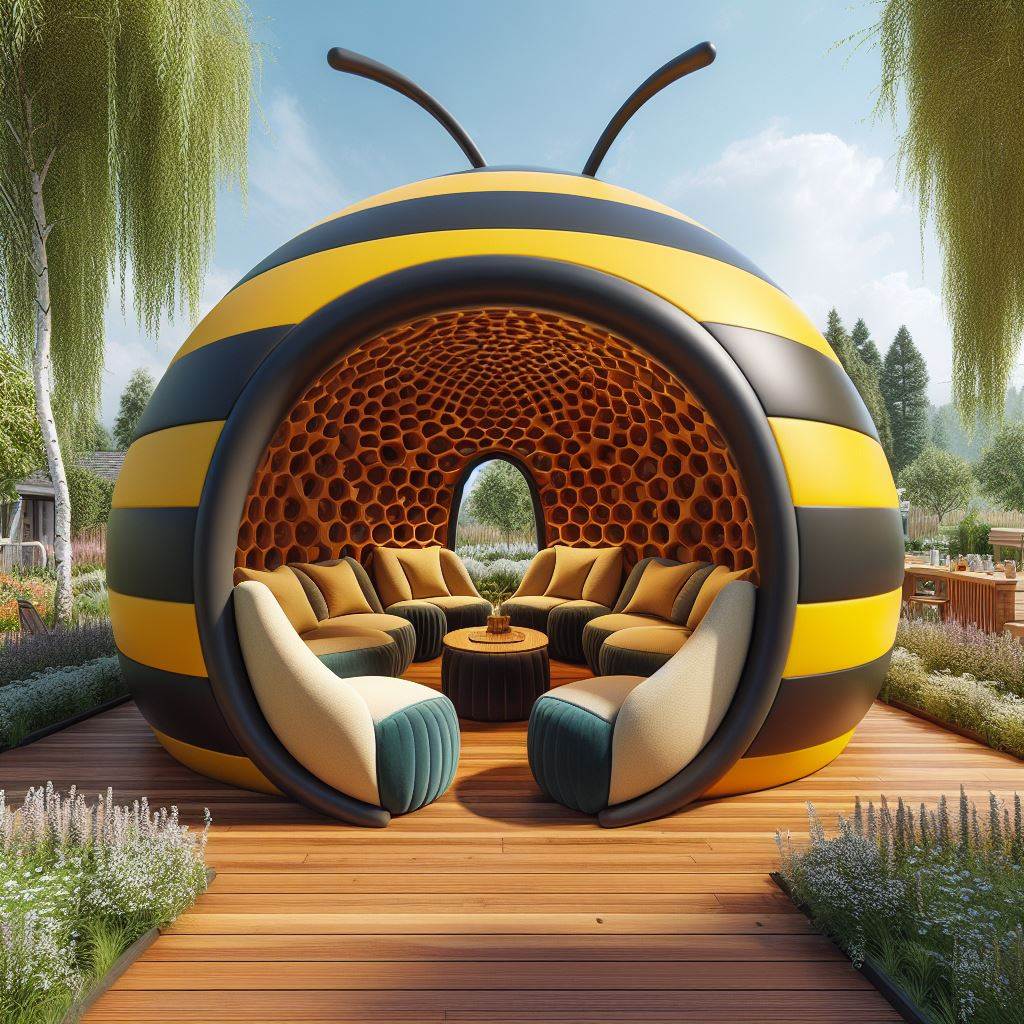Nature has always been a source of inspiration for human creations, and the world of outdoor seating is no exception. In recent years, a unique trend has emerged: insect-shaped outdoor seating. These bizarre yet captivating designs take their forms and patterns found in the insect kingdom, offering a whimsical and thought-provoking addition to public spaces and private gardens alike.
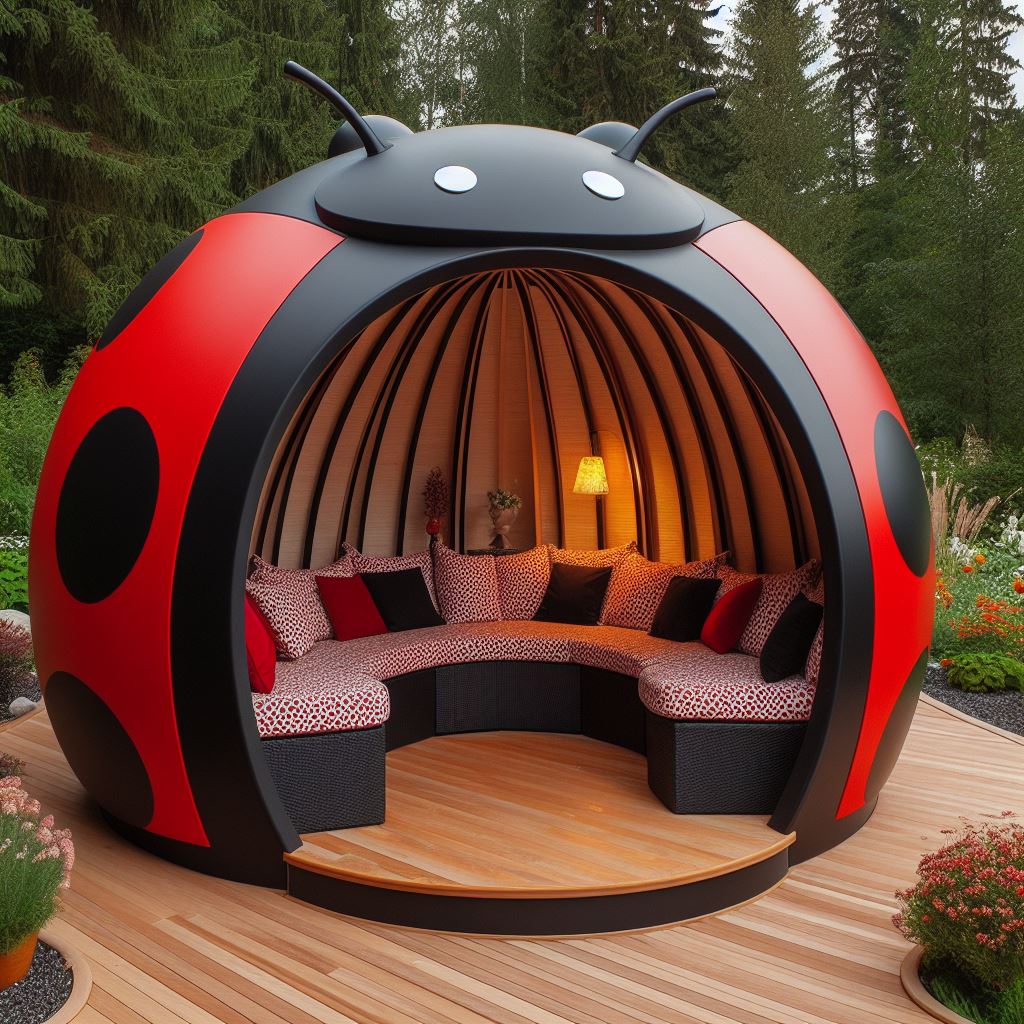
1. The Inspiration: Biomimicry and Nature’s Design Marvels

1.1 Biomimicry: Emulating Nature’s Brilliance
Biomimicry, the practice of drawing inspiration from nature’s ingenious designs and applying them to human innovations, has gained significant traction in various fields, including architecture and design. Insects, with their intricate structures and fascinating behaviors, have proven to be an endless wellspring of inspiration for biomimetic creations.
1.2 Insect Anatomy and Functionality
Insects exhibit remarkable adaptations that have allowed them to thrive in diverse environments. Their exoskeletons, compound eyes, and efficient locomotion mechanisms have captured the imagination of designers seeking to incorporate these principles into functional and visually striking outdoor seating solutions.

1.3 Sustainability and Eco-Friendly Design
Many insect-shaped outdoor seating designs embrace sustainable materials and eco-friendly construction methods, further aligning with the principles of biomimicry. By drawing inspiration from nature’s efficient and resilient systems, these creations aim to minimize their environmental impact while offering a unique and captivating experience.
2. The Designs: Bringing Insects to Life in Outdoor Spaces
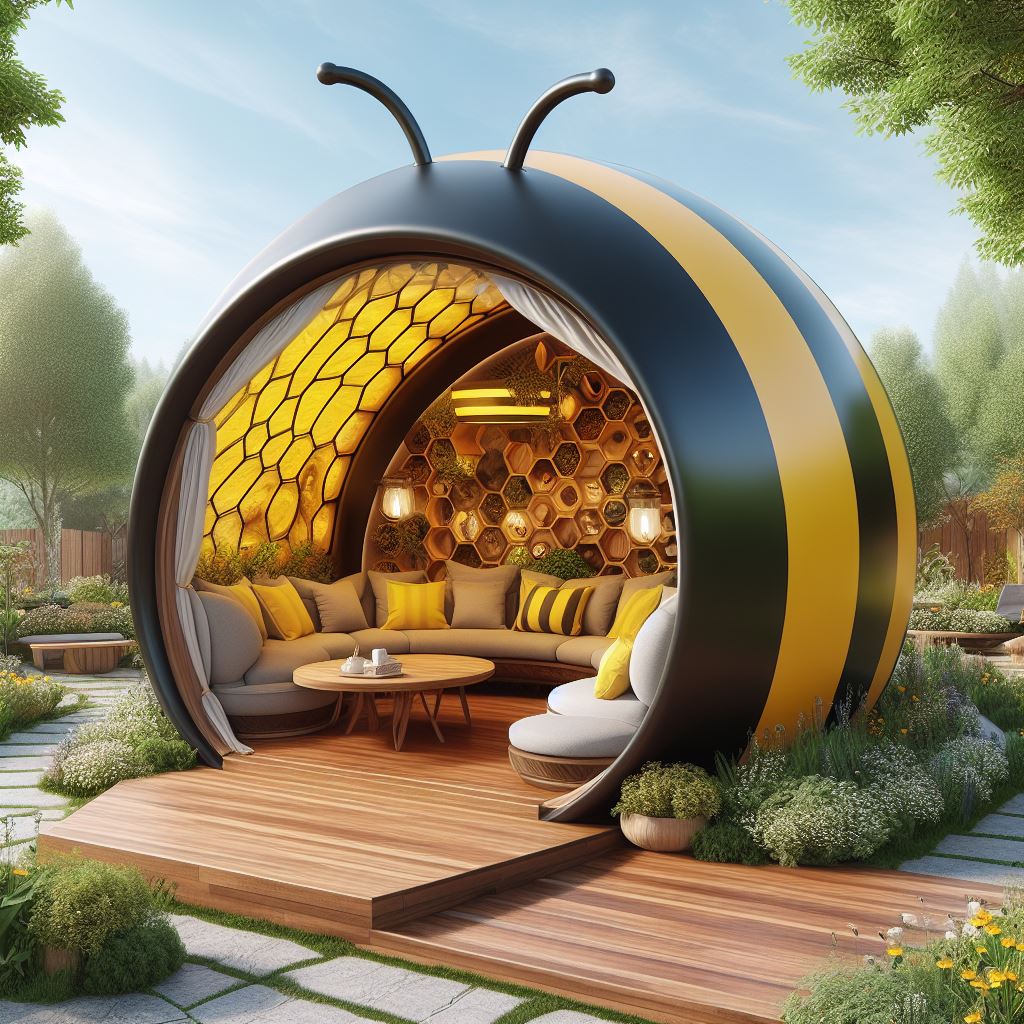
2.1 Beetle-Inspired Benches
Beetles, with their hard exoskeletons and intricate patterns, have inspired a range of outdoor seating designs. These benches often feature curved forms, mimicking the smooth contours of a’s shell, and incorporate intricate patterns and textures inspired by their elytra (hardened forewings).
| Design Feature | Description |
|---|---|
| Shape | Curved, elongated forms reminiscent of a beetle’s body |
| Materials | Wood, metal, or composite materials with textured finishes |
| Details | Intricate patterns and textures inspired by beetle elytra |
2.2 Dragonfly-Inspired Loungers
Dragonflies, with their delicate wings and aerodynamic bodies, have served as the muse for a series of whimsical outdoor loungers. These designs often incorporate elements that mimic the insect’s gossamer wings, creating a sense of lightness and movement.
- Curved Forms: The loungers often feature curved shapes that evoke the graceful flight of dragonflies.
- Lightweight Materials: To capture the delicate nature of dragonflies, designers employ lightweight materials like rattan, wicker, or aluminum.
- Wing-like Structures: Intricate metalwork or woven elements extend from the loungers, mimicking the intricate patterns of dragonfly wings.
2.3 Ant-Inspired Seating Clusters
Ants, known for their industrious nature and collaborative behavior, have inspired outdoor seating designs that encourage social interaction. These seating clusters often feature interconnected elements that mimic the intricate tunnels and mounds created by ant colonies.
- Modular Design: Individual seating units can be combined and rearranged, much like the adaptable nature of ant colonies.
- Textured Surfaces: The seating surfaces may incorporate textures and patterns inspired by the intricate structures found in ant nests.
- Integrated Planters: Some designs incorporate planters, further emphasizing the connection between the seating and the natural world.
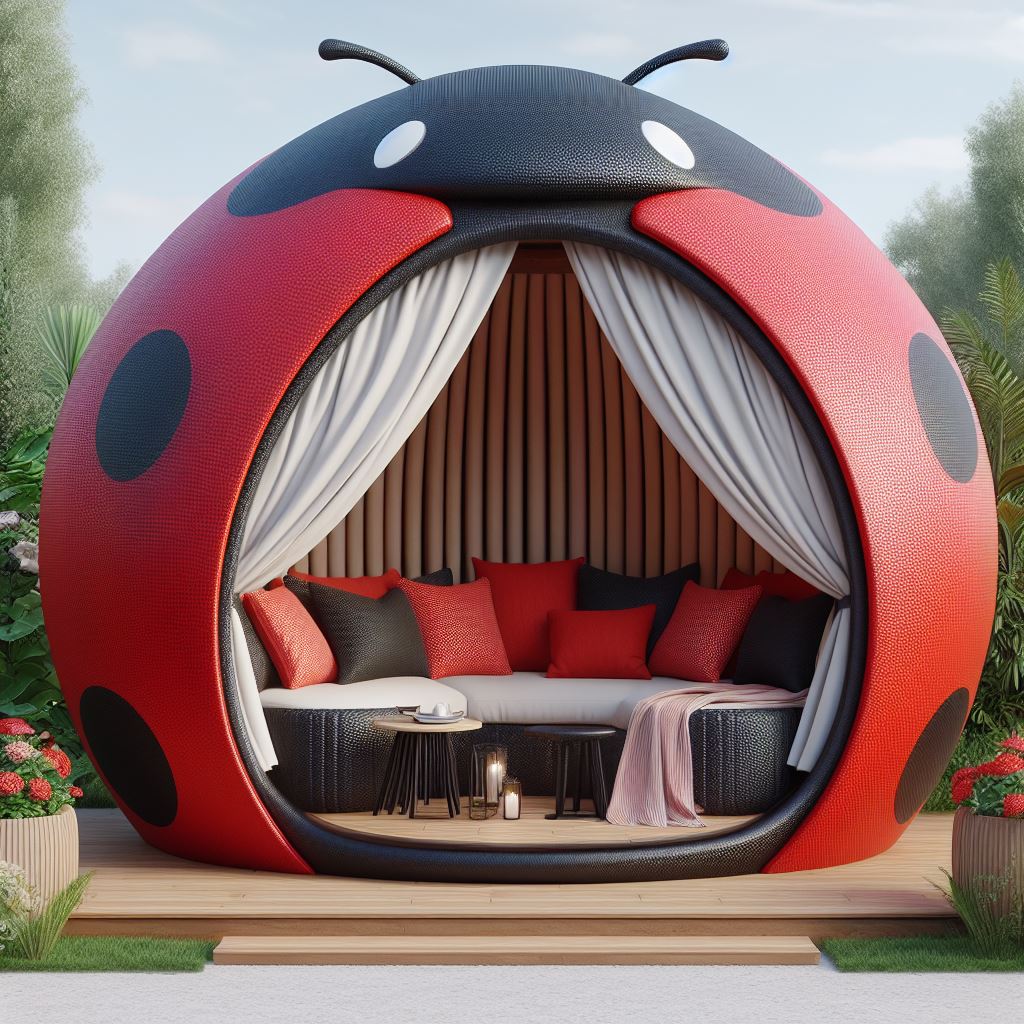
3. The Creators: Visionary Designers and Artists
3.1 Innovative Design Firms
Several design firms have embraced the concept of insect-shaped outdoor seating, pushing the boundaries of creativity and functional design. These firms often collaborate with biologists, entomologists, and materials scientists to ensure their creations are not only visually stunning but also structurally sound and environmentally conscious.
3.2 Independent Artists and Sculptors
Alongside design firms, independent artists and sculptors have also embraced the insect-inspired outdoor seating trend. Using a variety of materials, from reclaimed wood to metal and even repurposed objects, these artists create one-of-a-kind pieces that blur the lines between functional seating and sculptural art.
3.3 Community Collaboration and Public Installations
In some instances, insect-shaped outdoor seating projects have been collaborative efforts involving local communities. These initiatives aim to raise awareness about the importance of biodiversity and the role insects play in our ecosystems, while also providing unique public spaces for relaxation and contemplation.
4. The Impact: Fostering Appreciation for Nature and Biodiversity
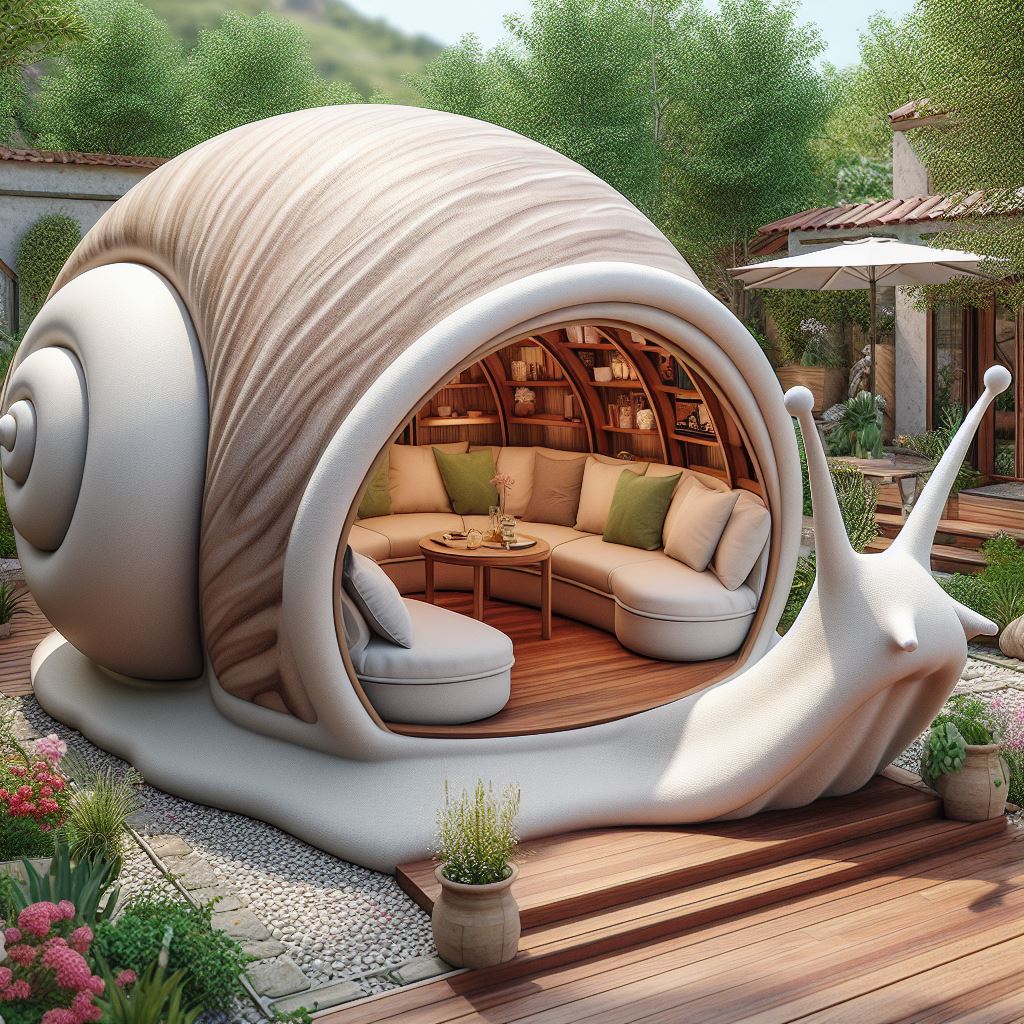
4.1 Educational Opportunities
Insect-shaped outdoor seating offers a unique opportunity to educate the public about the diverse world of insects and their vital roles in various ecosystems. These captivating designs can spark curiosity and encourage people to learn more about the intricate lives of these often-overlooked creatures.
4.2 Promoting Biodiversity and Environmental Awareness
By celebrating the beauty and complexity of insects through design, these outdoor seating installations can help raise awareness about the importance of preserving biodiversity and protecting natural habitats. They serve as visual reminders of the intricate web of life that surrounds us and the need to respect and conserve our environment.
4.3 Enhancing Public Spaces and Community Engagement
Beyond their educational and environmental impact, insect-shaped outdoor seating can also enhance public spaces by adding a touch of whimsy and creativity. These installations can become focal points for community gatherings, encouraging social interaction and fostering a sense of appreciation for the natural world.
5. The Challenges: Balancing Functionality and Artistic Expression

5.1 Structural Integrity and Durability
While insect-inspired designs can be visually captivating, ensuring their structural integrity and durability in outdoor environments can be a challenge. Designers must carefully consider factors such as weather resistance, load-bearing capacity, and maintenance requirements to ensure the seating remains functional and safe for public use.
5.2 Material Selection and Sustainability
Choosing appropriate materials that align with the principles of sustainability and environmental responsibility is another key consideration. Designers may need to explore innovative materials or repurpose existing resources to create eco-friendly and long-lasting outdoor seating solutions.
5.3 Accessibility and Ergonomics
Despite their artistic appeal, insect-shaped outdoor seating must also prioritize accessibility and ergonomics. Ensuring comfortable seating positions and accommodating different body types and abilities can be a challenge when working with unconventional forms inspired by the insect world.
6. The Future: Embracing Nature’s Ingenuity in Urban Environments
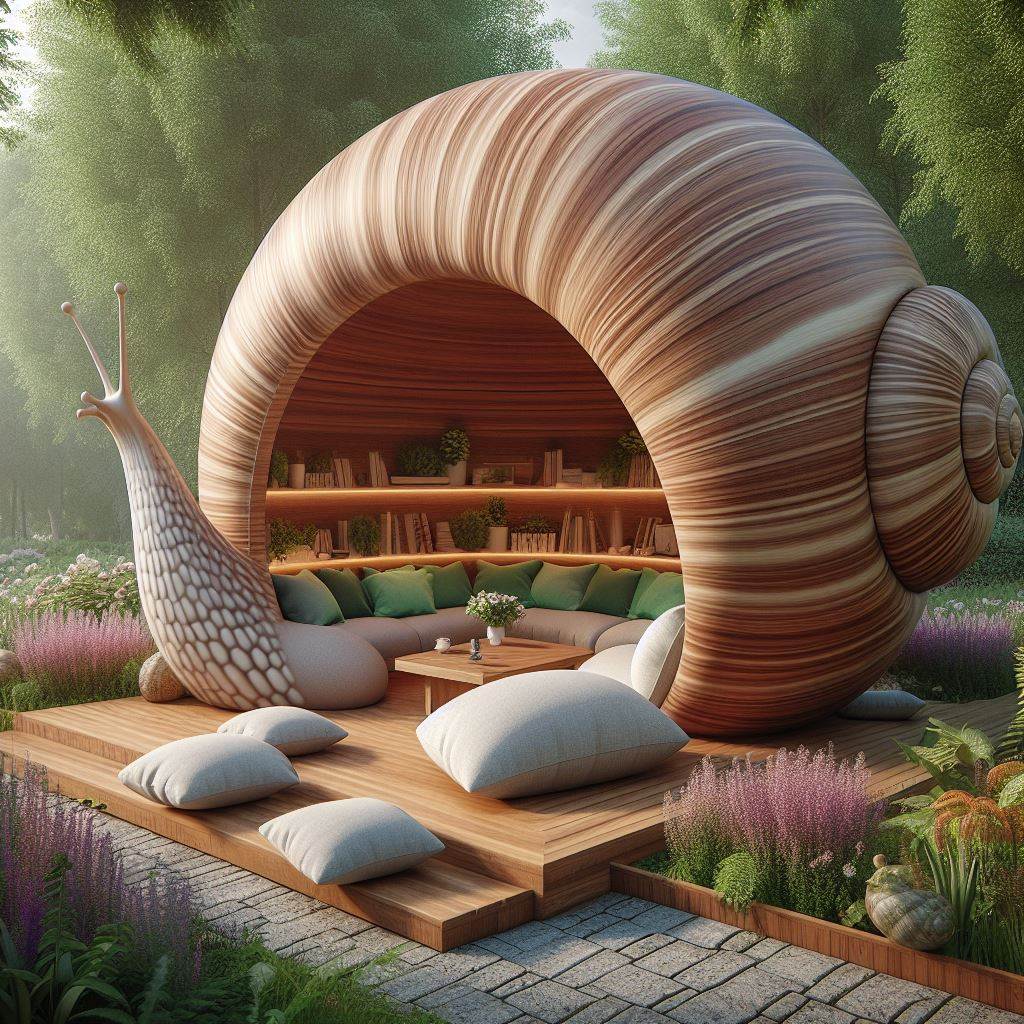
6.1 Integrating Biophilic Design Principles
As urban areas continue to grow, the need for incorporating biophilic design principles – which seek to connect people with nature in built environments – becomes increasingly crucial. Insect-shaped outdoor seating aligns with this concept, bringing elements of the natural world into urban spaces and fostering a deeper appreciation for the biodiversity that surrounds us.
6.2 Exploring New Materials and Technologies
Advances in materials science and manufacturing technologies open up new possibilities for insect-inspired outdoor seating designs. From 3D printing techniques that can replicate intricate patterns to sustainable and recyclable materials, designers can continue to push the boundaries of what is possible while minimizing their environmental impact.
6.3 Collaboration and Interdisciplinary Approaches
The future of insect-shaped outdoor seating lies in interdisciplinary collaboration. By bringing together designers, artists, biologists, engineers, and urban planners, innovative solutions can emerge that not only captivate the senses but also contribute to the overall well-being of urban environments and their inhabitants.
Conclusion
Insect-shaped outdoor seating is a remarkable manifestation of the intersection between nature, design, and innovation. These unconventional creations not only add a touch of whimsy to public spaces but also serve as a reminder of the intricate beauty and complexity of the natural world. By drawing inspiration from the diverse forms and behaviors of insects, designers and artists have created functional and visually striking seating solutions that challenge our perceptions and encourage us to appreciate the wonders of biodiversity.
As urbanization continues to reshape our environments, the integration of biophilic design principles becomes increasingly important. Insect-shaped outdoor seating offers a unique opportunity to reconnect with nature and foster a deeper understanding of the intricate web of life that surrounds us. These captivating designs have the potential to spark curiosity, inspire environmental awareness, and encourage communities to embrace and protect the natural world.
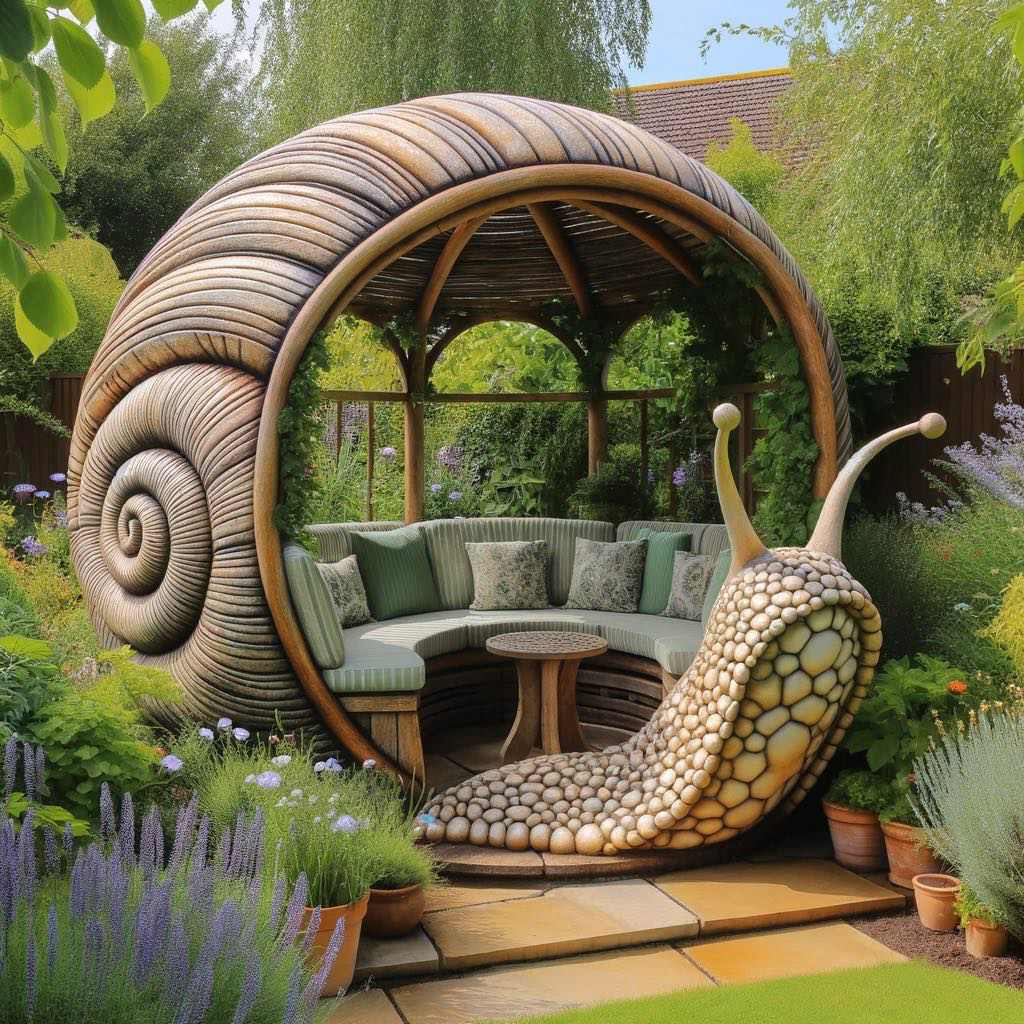
While challenges remain in balancing functionality, sustainability, and artistic expression, the future of insect-shaped outdoor seating looks promising. By prioritizing structural integrity, material sustainability, and ergonomic design, designers can create seating solutions that not only captivate the imagination but also withstand the test of time in outdoor settings. Collaboration across disciplines will be key to driving innovation and pushing the boundaries of what is possible in this emerging field.
In conclusion, insect-shaped outdoor seating represents a harmonious blend of art, nature, and functionality. These unique creations have the power to transform public spaces, spark conversations about biodiversity, and inspire a newfound appreciation for the natural world. As we look towards the future, embracing the ingenuity of insects in urban environments offers a creative and sustainable way to connect with our surroundings and promote environmental stewardship. Through creativity, collaboration, and a deep respect for the wonders of the natural world, insect-shaped outdoor seating stands as a testament to the beauty and resilience of both insects and human creativity.

